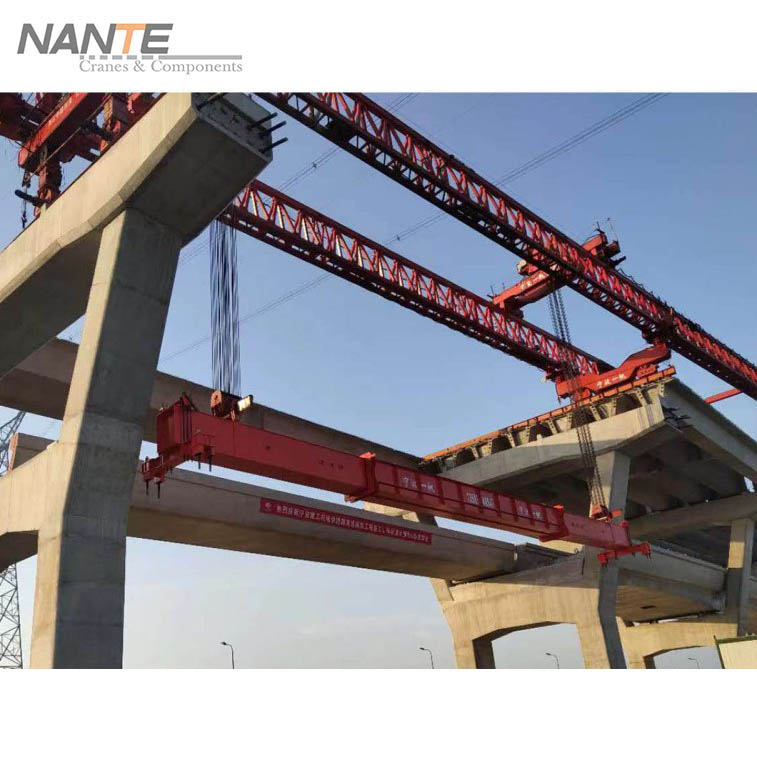Discover How Construction Cranes Impact Urban Development
Date: 2024-07-16 Share:
Enhancing Worker Safety
Construction cranes play a pivotal role in enhancing worker safety on construction sites. Their ability to lift heavy materials reduces the need for manual handling, thereby minimizing the risk of injuries. The design and operational features of modern cranes incorporate various hazard reduction techniques that contribute to a safer working environment.

Hazard Reduction Techniques
One of the primary ways cranes enhance safety is through hazard reduction techniques. These include features like anti-collision systems, limit switches, and load moment indicators, which prevent the crane from operating beyond its safe capacity. Such systems help in avoiding accidents that could occur due to overloading or mechanical failures. Additionally, cranes can be equipped with warning signals and alarms to alert workers of any imminent danger, ensuring they can take preventive measures in time.
Automated Safety Features
Modern construction cranes are also equipped with automated safety features that further bolster worker protection. These features include automated stop functions that activate if the crane detects an unsafe condition or an obstruction in its path. Remote control operation capabilities allow workers to manage cranes from a safe distance, reducing their exposure to potential hazards. These technological advancements make cranes not only powerful tools for construction but also guardians of worker well-being.
As one of the famous brands in the production of winches, cranes and crane parts, Nante Crane is dedicated to research and development of lifting and material handling technologies. We adopt innovative ideas and design in developing new products and services. Backed up by a wealth of industrial experience, we can provide customers with high quality lifting equipment and components.
Economic Impact of Using Construction Cranes
The utilization of construction cranes has a significant economic impact on building projects, making them more cost-effective and efficient. Their ability to perform complex tasks quickly and accurately translates to substantial savings in both time and money.
Cost-Effectiveness in Large Projects
Construction cranes are especially cost-effective for large projects. Their capacity to move heavy materials swiftly reduces the need for more labor-intensive methods. By streamlining operations, cranes minimize the time required to complete various construction phases, leading to lower labor costs. Moreover, the precision with which they operate helps in reducing material wastage, contributing to overall project cost savings.
Labor Cost Savings
Using construction cranes also results in significant labor cost savings. Fewer workers are needed to manually handle heavy lifting, which decreases labor expenses. Additionally, the rapid movement of materials facilitated by cranes means that the workforce can focus on other critical tasks, increasing overall productivity. This efficient allocation of labor resources enhances the economic feasibility of complex projects.
Long-Term Investment Benefits
Investing in construction cranes represents a long-term financial benefit for construction companies. While the initial purchase or rental costs may be substantial, the long-term savings and efficiency gains offset these expenditures. Cranes typically have a long service life and can be used across multiple projects, offering a high return on investment. Furthermore, the use of advanced cranes with modern technologies can enhance a company’s competitive edge in the industry.
Technological Advances in Construction Cranes
Technological innovations have profoundly transformed construction cranes, enhancing their performance, efficiency, and environmental footprint. Modern cranes are now equipped with sophisticated features that make them smarter, more sustainable, and easier to operate.
Smart Crane Technologies
Smart crane technologies have revolutionized the construction industry by integrating advanced systems that enhance operational efficiency and safety.
Remote Operation and Monitoring
Remote operation and monitoring capabilities allow crane operators to control cranes from a distance using wireless technology. This feature not only improves safety but also enables precise control over crane movements. Real-time data on crane performance, load capacity, and operational status can be accessed remotely, facilitating proactive maintenance and reducing downtime.
Integration with Building Information Modeling (BIM)
The integration of cranes with Building Information Modeling (BIM) systems allows for seamless coordination between the crane’s operations and the overall construction workflow. This synergy enhances planning, reduces errors, and ensures that crane activities align precisely with the project timeline. The result is a more efficient construction process with fewer delays and improved project outcomes.
Sustainability Features
As environmental concerns take center stage, construction cranes are incorporating sustainability features to reduce their ecological impact.
Energy Efficiency Improvements
Modern construction cranes are designed to be more energy-efficient, utilizing advanced hydraulic systems and electric power sources. These improvements reduce fuel consumption and lower operating costs, making cranes more environmentally friendly. Energy efficiency also translates to fewer emissions, contributing to the broader goals of sustainable development.
Reduced Emissions
Reduced emissions are another critical sustainability feature of contemporary cranes. Many new models are equipped with engines that comply with stringent emission standards, significantly cutting down on the release of harmful pollutants. Some cranes even operate on alternative fuels or hybrid power systems, further minimizing their carbon footprint and supporting greener construction practices.
As one of the famous winch production and manufacturing brands, Nante Crane is committed to helping our clients reduce investment cost, improve production efficiency, and economize energy consumption. Nante Crane’s main products include industrial cranes, offshore cranes, Launching Crane, electric hoists, crane travel unit, mobile power supply system etc. with reliable and excellent performance.
Real-World Applications of Construction Cranes
Construction cranes are pivotal in a wide array of real-world applications, from towering skyscrapers to critical infrastructure projects.
High-Rise Buildings and Skyscrapers
Construction cranes are indispensable in the erection of high-rise buildings and skyscrapers. Their ability to reach great heights and lift heavy materials to elevated floors makes them a key component in constructing these architectural marvels. Tower cranes, in particular, are a common sight during skyscraper construction, enabling the precise placement of steel beams, glass panels, and other essential components.
Infrastructure Projects
Infrastructure projects such as bridges, highways, and transportation hubs also heavily rely on construction cranes. These projects often involve large-scale lifting and precise placement of substantial materials. Crawler cranes, with their robust design and stability, are particularly suited for such tasks, ensuring that construction proceeds smoothly even in challenging environments.
Specialized Constructions
Specialized constructions, including stadiums, airports, and industrial facilities, benefit immensely from the versatility of construction cranes. Different types of cranes, such as telescopic and mobile cranes, are often employed to meet the specific requirements of these projects. Their adaptability and range of motion allow for efficient handling of diverse construction tasks, ensuring that projects are completed to high standards and within stipulated timelines.
In addition to producing and manufacturing winches, Nante Crane has achieved breakthroughs in core technology and has the ability to manufacture core components, which are widely used in more than 20 professional fields such as advanced manufacturing, metal processing, aerospace, etc. Nante Crane is committed to the research and development and manufacturing of handling machinery and technology.
Future Trends in Construction Crane Usage
The future of construction crane usage is set to be shaped by advancements in technology, increased automation, and a stronger focus on sustainability.
Advancements in Crane Design
Future advancements in crane design will likely focus on improving efficiency, capacity, and ease of use. Innovations such as lighter, stronger materials and more compact, modular designs will make cranes more accessible and versatile. Enhanced ergonomic features will also improve operator comfort and safety, further boosting productivity.
Increased Automation and Robotics
Automation and robotics are poised to play a significant role in the next generation of construction cranes. Fully automated cranes equipped with artificial intelligence (AI) and machine learning capabilities will be able to perform complex tasks with minimal human intervention. These advancements will not only speed up construction processes but also reduce the potential for human error, leading to safer and more reliable operations.
Enhanced Sustainability Practices
Enhanced sustainability practices will continue to drive the evolution of construction cranes. Emerging technologies will focus on reducing energy consumption and emissions, utilizing renewable energy sources, and recycling materials. The construction industry’s growing commitment to sustainability will ensure that future cranes are designed and operated with the environment in mind, contributing to more eco-friendly urban development.
In conclusion, construction cranes are crucial to modern building projects, revolutionizing the construction industry with their lifting capabilities, efficiency, safety features, and technological advancements. They not only streamline construction processes but also offer significant economic benefits, making them indispensable in the rapidly evolving landscape of urban development. As technology continues to advance, the role of construction cranes will only grow, paving the way for a more innovative, efficient, and sustainable construction industry.
 English
English






